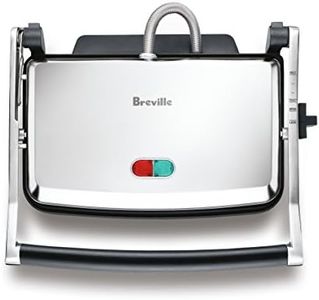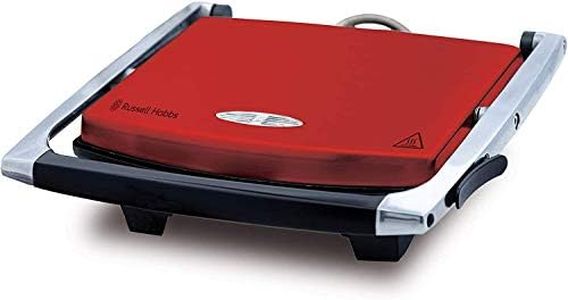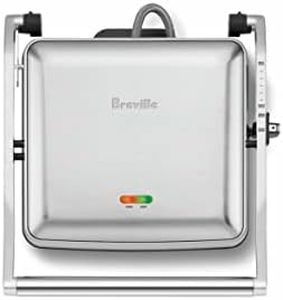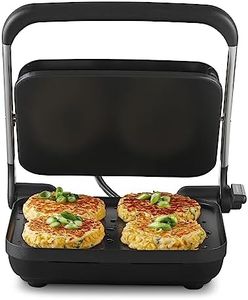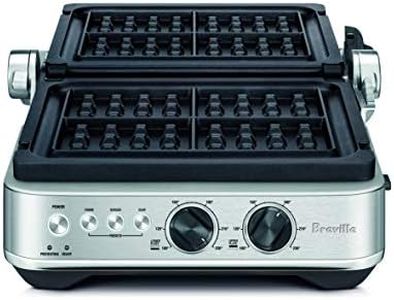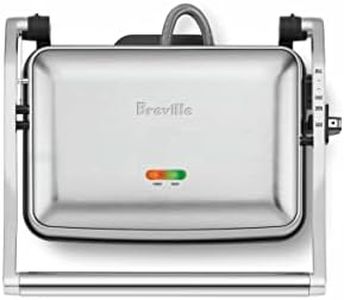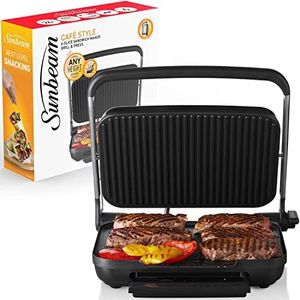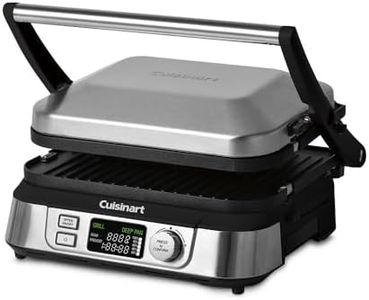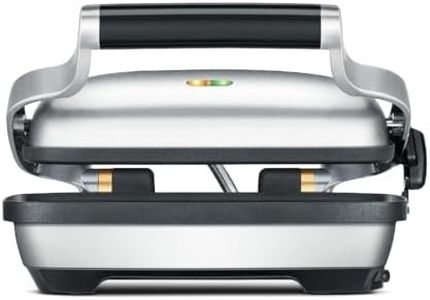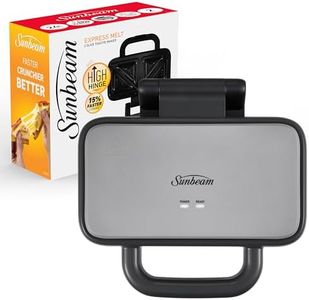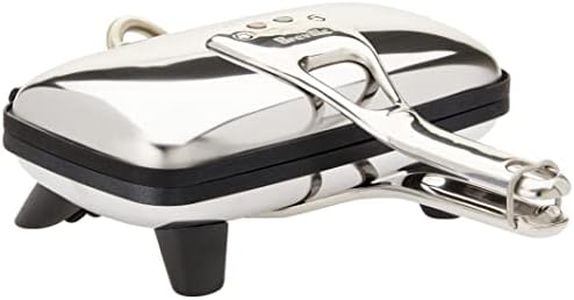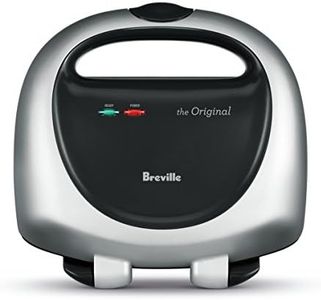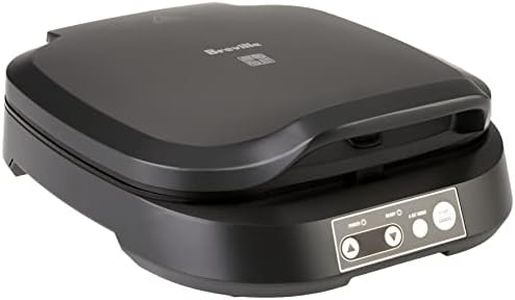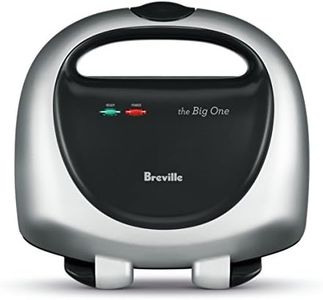We Use CookiesWe use cookies to enhance the security, performance,
functionality and for analytical and promotional activities. By continuing to browse this site you
are agreeing to our privacy policy
10 Best Sandwich Press
From leading brands and best sellers available on the web.Buying Guide for the Best Sandwich Press
Choosing the right sandwich press is all about understanding your specific needs in the kitchen. Do you want to whip up quick grilled cheese sandwiches or try your hand at making paninis, melts, or even grilling vegetables? The right press should fit comfortably on your countertop, be easy to clean, and deliver the type of toasting or grilling you enjoy. By looking at a few key features, you can pick a model that will make your sandwich-making simple and satisfying.Plate TypePlate type refers to the surface where you place your bread and fillings. It can be flat, ridged, or a mix of both. Flat plates evenly grill your sandwich and are great for classic toasties, while ridged plates give paninis beautiful grill marks and help drain away some oil or butter. When choosing, think about what kind of sandwiches you like most—flat for even toasting, ridged for texture and grilled-style sandwiches, or a reversible option for versatility.
Plate MaterialThis spec is about what the cooking plates are made from, such as non-stick coated metal or ceramic. Non-stick plates make cleaning quicker and prevent ingredients from sticking, making them ideal for messier fillings or regular use. Ceramic tends to be more durable and resist scratching. If you love cheesy sandwiches or want fuss-free cleaning, non-stick is a safe pick. If you like to use metal utensils sometimes or want something that might last longer, ceramic could work better.
Size and CapacitySize and capacity describe how many sandwiches you can make at once and how big those sandwiches can be. Small presses might handle one or two standard-size sandwiches, ideal for singles or small households. Larger presses fit multiple or extra-large sandwiches, suitable for families or gatherings. Think about how many people you usually cook for and your preferred sandwich size—this helps you choose a press that meets your daily demands without taking up too much space.
Temperature ControlTemperature control is how much you can adjust the heat levels. Some sandwich presses have a fixed temperature, meaning they’re simple to use but less flexible. Adjustable temperature lets you cook more types of food (like thick focaccia or thin tortillas) and have more say over crispy or soft results. If you want set-and-forget simplicity, fixed temperature is enough; if you like experimenting with different breads or fillings, adjustable temperature is worth having.
Floating HingeA floating hinge allows the top plate to move up and down as needed, so it sits comfortably on thick or thin sandwiches without squashing them unevenly. This feature is especially important if you use different bread types or like to stuff your sandwiches with extra fillings. If you prepare only standard sandwiches, a fixed hinge is fine, but if you value versatility or like tall gourmet paninis, a floating hinge will give you better results.
Ease of CleaningThis spec is about how simple it is to keep your sandwich press tidy, which might be affected by features like removable plates or a drip tray. Removable plates make washing much more convenient, especially if you cook sticky or cheesy items. Drip trays catch extra oil or melted cheese. If you use your sandwich press often or dislike scrubbing, prioritize features that help with easy cleaning.
Heat-Up TimeHeat-up time refers to how quickly the appliance reaches cooking temperature. Fast heat-up times mean you can start grilling sooner, which is handy for busy mornings or quick lunches. If you often cook in a rush, a quick-heating press is valuable. For occasional or more leisurely use, this may not be as important.
